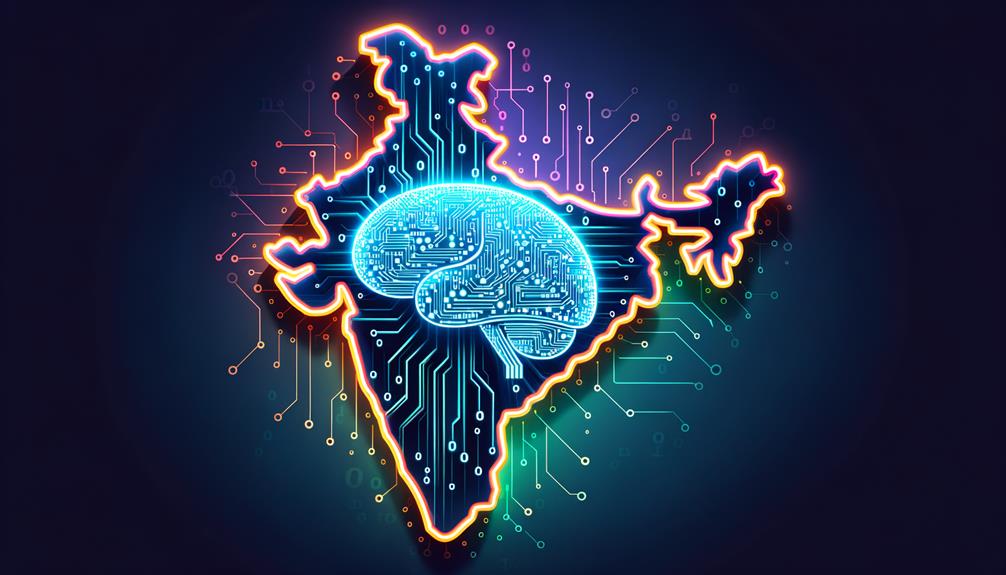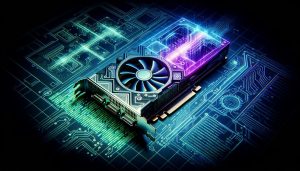GPT-5, OpenAI's upcoming AI language model, is set to be a game-changer. It's rumored to have trillions of parameters and expected to drastically improve reasoning, creativity, and versatility. Beyond linguistic abilities, I understand GPT-5 will handle text, images, audio, and video, creating a more all-encompassing, multi-modal user experience. OpenAI is aiming for less than 10% hallucinations, boosting trust and reliability in its outcomes. We're anticipating its release could be in 2024 or later. If you stick with me, we'll explore the model's potential to revolutionize machine learning and take us a step closer to Artificial General Intelligence.
Table of Contents
Understanding GPT-5
Diving into the mechanics of GPT-5, it's an upcoming AI language model by OpenAI, currently under development with promising features that may revolutionize natural language processing and machine learning. As I've gathered, this next-generation model is rumored to have multiple trillions of parameters, which could provide unprecedented enhancements in reasoning, creativity, and versatility.
OpenAI hasn't spilled many beans about GPT-5 yet, but Sam Altman, the organization's CEO, has confirmed that it's in the training phase. This suggests a more extensive and sophisticated training process, likely leveraging a larger volume of data than its predecessor, GPT-4. The data pool, sourced from public information and proprietary data, will be key in shaping the capabilities and performance of this AI juggernaut.
One of the most intriguing aspects of GPT-5 is its potential for improved accuracy. Current speculations suggest less than 10% hallucinations, meaning an uptick in the reliability of its language outputs. This could significantly bolster user trust, a critical aspect in the wider adoption of AI language models.
But GPT-5 isn't stopping at text. It's expected to exhibit all-encompassing multimodality, incorporating images, audio, video, and 3D content. This is a major leap forward, potentially transforming how we interact with AI systems. The ability to process and generate multiple types of content could make GPT-5 an all-encompassing tool for various applications, from content creation to predictive analysis.
In essence, GPT-5 is shaping up to be a liberating force in the AI world, promising to push the envelope in machine learning and natural language processing.
GPT-5 Release Date Expectations
Shifting our focus to the anticipated release date of GPT-5, despite no official confirmation, chatter in the tech community hints at a potential launch in 2024 or later. This speculation is fueled by a pattern observed in the release of previous iterations, alongside some promising patents filed by OpenAI on November 14, 2023. The patents, intriguingly titled GPT-6, GPT-7, and GPT Store, suggest a roadmap that extends beyond the upcoming GPT-5, possibly indicating its imminent arrival.
Yet, it's not all about the technology's readiness. The timing of GPT-5's release is also likely intertwined with ethical considerations. As the power of these AI models grows, so too does the potential for misuse. In fact, the tech community has expressed growing concerns about the implications and risks associated with such advanced AI systems. These worries could conceivably delay GPT-5's rollout as OpenAI grapples with the challenge of balancing innovation with responsibility.
OpenAI's Sam Altman has confirmed that the GPT-5 team is currently in the training phase. This piece of information is particularly telling. It shows that while we may be keenly awaiting GPT-5's debut, the model is still in its development stage, being carefully refined and optimized.
Data Training in GPT-5
As we delve into the intriguing domain of data training for GPT-5, it's remarkable that OpenAI is making significant strides in enhancing its datasets using GPTBot, a specialized web crawler. This innovative tool is expected to play a pivotal role in GPT-5's data training, enabling it to process a larger volume of data compared to its predecessor, GPT-4. In the quest for sophistication, the data feeding this advanced model will be sourced from both public information sources and proprietary data.
The following points provide an in-depth look into the expected data training process in GPT-5:
- GPT-5 will require an extensive and diversified set of training data, much more than what was utilized for GPT-4.
- The data will be a mix of public and proprietary sources, ensuring a wide range of information for the model to learn from.
- GPTBot will be instrumental in gathering and processing this data, acting as a web crawler to fetch relevant data for GPT-5.
- GPT-5 will leverage a diverse range of data sources, maximizing the model's exposure to varied linguistic patterns and knowledge bases.
- The data training process in GPT-5 will prioritize quality over quantity, focusing on relevant data to provide more accurate and contextually aware outputs.
As AI enthusiasts, we're on the brink of experiencing a new era of machine learning models that are more advanced and capable. GPT-5's data training process promises to bring us one step closer to this goal, offering us a glimpse into the future of AI advancements.
Accuracy Improvements in GPT-5
Building on the substantial progress made by GPT-4, GPT-5 is set to push the boundaries of accuracy in language models even further. GPT-4's reduced hallucinations were a stepping stone; now, GPT-5 is gunning for less than 10% hallucinations, an impressive feat that will instill greater trust in the model's outputs.
With GPT-4 delivering accuracy levels exceeding 80% across various categories, the promise of GPT-5 is even more significant. It's not just about increasing precision; it's about creating a language model that users can trust with confidence. The improvements in accuracy aren't just for show; they're designed to enhance the interaction fidelity, making GPT-5 not just a tool, but a reliable partner for tasks requiring natural language processing.
OpenAI's dedication to accuracy improvements is evident in their commitment to reducing errors in GPT-5. They're not just tweaking algorithms; they're redefining the benchmark of excellence in language models. The focus is on making GPT-5 more reliable, more trustworthy, and more accurate.
As we look forward to GPT-5, we can anticipate a model that's sharper, smarter, and more accurate than its predecessors. It's about liberation – liberation from inaccuracies that hinder seamless communication, liberation from the constraints of mistrust in AI technology. With GPT-5, we're set to experience a language model that's designed not just to impress, but to deliver with precision, accuracy, and trustworthiness. The era of GPT-5 beckons, and with it comes a new standard of accuracy in language models.
Comprehensive Multimodality in GPT-5
Delving deeper into the capabilities of GPT-5, one of the most anticipated features is the extensive multimodality, a feature set to revolutionize how we interact with AI by processing text, images, audio, video, and even 3D content. This thorough multimodality isn't just an add-on; it's a game-changer. It's the key to smooth shifts between different content inputs, creating immersive experiences that are far beyond what's currently possible.
Consider how this could revolutionize our interaction with AI:
- Textual Interaction: By understanding and generating text, GPT-5 can engage in sophisticated conversations, making it a powerful tool for communication.
- Image Processing: GPT-5's ability to interpret images can transform visual content into a language that computers understand, providing users with deeper insights.
- Audio Processing: This could enable GPT-5 to understand spoken language, opening up possibilities for voice-activated commands and dictation.
- Video Analysis: By understanding video content, GPT-5 could provide real-time feedback on live events, enhancing user interaction and engagement.
- 3D Content Interaction: With the ability to process 3D content, GPT-5 could be instrumental in fields like virtual reality and gaming, providing users with an immersive experience that's second to none.
The power of GPT-5 lies in its ability to leapfrog over existing barriers, providing an AI experience that's more interactive, intuitive, and immersive. It's a confirmation of OpenAI's commitment to pushing the boundaries of what's possible, ensuring that AI isn't just a tool for the tech-savvy, but a means of liberation for all.
Cost-Effective Scaling in GPT-5
While exhaustively multimodality highlights the technological prowess of GPT-5, its potential for cost-effective scaling is equally remarkable, potentially making advanced AI technology more accessible to a wider audience. Its cost reduction efforts could significantly enhance performance in coding and research tasks, as already seen with its predecessor, GPT-4.
Democratization of access to GPT-5 may lead to broader integration of AI applications. This would be a significant stride towards the liberation of technological tools, breaking down the barriers of exclusivity and elite privilege. The democratization of such advanced AI technologies could indeed be a game-changer.
Cheaper access to GPT-5 can drive innovation and skill development in AI applications. It's about taking the power of AI to the masses, enabling them to reimagine and reshape their work, their creativity, and their world. It's about empowering every coder, researcher, and innovator who has been held back by financial constraints.
Here is a brief look at the potential impact of cost-effective scaling in GPT-5:
| Cost-Effective Scaling | Impact | Beneficiary |
|---|---|---|
| Reduced API cost | Increased accessibility | Wider audience |
| Enhanced performance | Improved coding/research tasks | Coders, researchers |
| Democratization of access | Broader AI integration | Innovators, general public |
GPT-5 and Artificial General Intelligence
As we shift our focus to GPT-5's potential contribution to Artificial General Intelligence (AGI), it's evident that the advanced capabilities and broader understanding this model offers could pave the way for a new era in AI development. This leap toward AGI, an AI system with human-like cognitive abilities, could revolutionize not just technology, but every aspect of our lives.
To paint a vivid picture of GPT-5's potential impact, consider the following:
- GPT-5 could bring us closer to AGI, greatly enhancing AI's comprehension and decision-making capabilities.
- OpenAI's patents for GPT-6, GPT-7, and GPT Store suggest a dedication to a future of increasingly advanced AI models.
- Speculations about GPT-5 indicate a significant advancement toward AGI, transforming the very landscape of AI.
- OpenAI's confirmation of GPT-5 development shows a committed push to achieve AGI, highlighting the organization's dedication to pushing AI boundaries.
- The excitement surrounding GPT-5's release underscores the potential impact of its progression towards AGI.
In essence, the development of GPT-5 is a beacon of hope for those yearning for liberation through AGI. Its potential to understand and interact in a way that mirrors human cognition could be the key to unlocking unprecedented possibilities. As the boundary between artificial and human intelligence blurs, we stand on the brink of a new era, closely observing GPT-5's potential to propel us into the future of AGI.
Expanding Beyond Text in GPT-5
Exploring into the realm of multi-sensory data processing, GPT-5 steps up its game by incorporating the ability to process not just text, but also images, videos, and audio, broadening the scope of its interactions and applications. This innovative expansion isn't just a neat trick—it's a paradigm shift that paves the way for immersive AI interactions, accommodating various types of data inputs. It's a thrilling evolution that's set to offer liberation from the constraints of text-only AI communications.
As I investigate further into GPT-5's multi-sensory approach, it's clear that its ability to interpret visual and auditory cues directly impacts user experience. No longer confined to parsing and generating text, it can now understand an image or decipher the content of a video, making interactions more engaging and intuitive. It's a significant leap in AI's capacity to engage with users across multiple modes of communication.
Furthermore, this expansion opens doors to a myriad of creative and practical applications. Imagine an AI that not just reads a medical report, but also interprets associated images, providing a more holistic diagnosis. Or a virtual assistant that doesn't just listen to voice commands, but also recognizes the user's facial expressions and body language, offering a more personalized response.
The Evolution of Language Models
Tracing the lineage of the GPT series, it's evident that each iteration marks a substantial leap in the field of language models, setting new standards in natural language processing and text generation capabilities. The evolution isn't only fascinating but also inspiring, as we witness the morphing of these models from their nascent stages into sophisticated AI.
To paint a picture for this tech-savvy audience, let's consider the following:
- GPT-1: This was the progenitor, the first in the line that laid the foundation for what was to come. It was quite a revelation in its time, but clearly, it was just the beginning.
- GPT-2: An upgrade from GPT-1, it provided better performance and increased capabilities. It deepened the understanding of text context and improved the generation quality.
- GPT-3: This was a game-changer. With 175 billion parameters, it set new benchmarks in natural language processing. It enabled more nuanced and contextual text generation.
- GPT-4: Building on the success of GPT-3, GPT-4 continued to impress with its enhanced abilities. It marked a new milestone in AI language modeling.
- GPT-5: The anticipation for this is high, and rightly so. Its development began in January 2024, and it's expected to carry the torch forward with even more advancements.
This evolution signifies a progressive journey towards liberation, liberating us from language constraints and enabling more human-like interactions with AI. The continuous improvements in the GPT series are a confirmation of that, and we can only wait with bated breath for what GPT-5 will bring to the table.
AI Efficiency and Speed in GPT-5
How will GPT-5's enhanced computational efficiency and speed revolutionize our interactions with AI?
The promise of GPT-5 lies in its potential to redefine our relationship with machine learning models by leveraging increased computational efficiency and speed. This optimization isn't merely a technical upgrade but a transformative enhancement that will make AI interactions more immediate and responsive.
GPT-5's amplified efficiency focuses on accelerating response times, aligning with the global demand for swift and precise AI outputs. The era of waiting for AI to process information is fading. We're moving towards an era where AI responds as fast as we input. This speed isn't just about saving time; it's about empowering users with real-time insights, making AI a more reliable and practical tool across various applications.
This improvement also extends to the AI's practicality. A faster, more efficient AI means more streamlined processes, less wasted resources, and a considerably enhanced user experience. It's not just about the AI doing its job faster; it's about the AI doing its job better.
GPT-5's commitment to efficiency and speed reflects OpenAI's dedication to pushing the boundaries of AI technology. It signifies a future where AI isn't just a tool, but an integral, efficient, and quick-acting part of our lives. It's a liberating prospect for those of us who desire not just better AI, but better, faster, and more efficient solutions to our everyday challenges.
In the end, GPT-5's enhanced efficiency and speed promise to revolutionize our engagement with AI, pushing us towards a future where AI interactions are swift, precise, and utterly transformative.
Innovations in GPT-5
Let's explore the pioneering advancements that GPT-5 brings to the table, potentially reshaping the landscape of artificial intelligence as we're aware of it. It's packed with exciting, groundbreaking features that aim to inject more efficiency, trustworthiness, and versatility into the world of AI.
To get a clearer picture, here's a rundown of what we can expect:
- A significant reduction in hallucination instances, taking it down to less than 10% to guarantee greater reliability in language outputs.
- A strong focus on compute efficiency improvements, to slash costs and decrease the size of parameters for superior performance.
- The introduction of multi-sensory capabilities, making it possible for GPT-5 to handle a wide array of data types such as text, images, audio, and video.
- Enhanced long-term memory that allows for longer context lengths, thereby improving its contextual understanding and response generation.
- Improved contextual comprehension, leading to more meaningful and accurate responses across a variety of tasks and interactions.
Each of these innovations represents a significant stride forward, pushing the boundaries of what AI can achieve. We're seeing a model that's not just smarter, but also more reliable, efficient, and versatile.
The advent of GPT-5 is a proof to the relentless pursuit of excellence in the field of AI. By actively seeking out areas of improvement and relentlessly innovating, we're witnessing an AI revolution that's set to liberate us from the confines of traditional technology, and I, for one, can't wait to see what comes next.
The Future Path of GPT-5
As we marvel at the groundbreaking advancements GPT-5 brings, it's equally intriguing to envision the future trajectory of this AI model. It's projected that GPT-5 will reduce hallucinations to less than 10% for increased trustworthiness in language outputs. This implies a remarkable enhancement in the model's ability to generate contextually accurate and reliable text, a significant leap towards AI liberation.
Efforts are also underway to improve compute efficiency in GPT-5. This suggests an optimization of the model's resource consumption, leading to cost reduction and an increase in overall efficiency. The AI community is also working on reducing the size of parameters, which will further streamline the model's performance.
The future path of GPT-5 also includes the development of multi-sensory capabilities. This means the model could handle various types of data, including text, images, audio, and video. Such versatility will certainly widen the scope of applications and enhance the model's adaptability, making it even more useful in the real world.
An anticipated enhancement in GPT-5 is its long-term memory for extended context length. This improvement is designed to boost the model's contextual understanding and response generation. Consequently, we can expect more meaningful and accurate responses to user queries, enhancing user experience tremendously.
These expected advancements mark a future of increased efficiency, versatility, and reliability in AI language models. The promise of GPT-5 isn't just about the liberation of AI, but also about empowering us with a tool that understands, learns, and adapts like never before.
Community Insights on GPT-5
A significant majority of the AI community is eagerly looking forward to the release of GPT-5, especially because of its commitment to lower hallucination rates, enhance compute efficiency, and the integration of multi-sensory capabilities. The anticipation is palpable, not just for the groundbreaking technical advancements, but also for the broader implications these enhancements could have for the AI landscape.
To paint a more vivid picture, here are some key aspects the community is excited about:
- The reduction of hallucination rates to less than 10%, enhancing the model's trustworthiness and reliability.
- The improvement in compute efficiency, which is expected to notably reduce the cost and size of parameters, thereby enhancing performance.
- The integration of multi-sensory capabilities, opening up possibilities for GPT-5 to handle a wider variety of data more effectively.
- The enhancement of long-term memory features to enable longer context length and a better understanding of context.
- The focus on improved accuracy and context understanding, building on the advancements of previous GPT models.
The AI community is hopeful that these improvements won't only make GPT-5 more efficient and versatile, but also more accessible to a wider range of users. By reducing costs, enhancing accuracy, and broadening data compatibility, GPT-5 could liberate us from current AI limitations, marking a noteworthy leap forward in our AI capabilities.
As we eagerly await its release, there's no denying that GPT-5 holds the potential to revolutionize the AI landscape.
Comparing GPT-5 With Previous Versions
Delving into the core of GPT-5's upgrades, it's evident that this newest version outshines its predecessors, especially concerning accuracy, computational efficiency, and context comprehension. By aiming to reduce hallucination errors to less than 10%, GPT-5 promises increased reliability—a much-needed improvement.
The previous version, GPT-4, had already shown impressive strides, demonstrating a 40% improvement in factual evaluations compared to GPT-3.5. Still, GPT-5 is set to surpass this, further enhancing accuracy, reducing errors, and refining overall interaction fidelity.
Emphasizing efficiency, GPT-5 is expected to streamline computational processes, a game-changer concerning parameter costs and size. This focus on efficiency underlines OpenAI's commitment to making AI more accessible, a nod to the audience that desires liberation from the constraints of current AI technologies.
Contextual understanding, a key element for coherent and relevant responses, is another area where GPT-5 will shine. This enhancement is expected to lead to more nuanced interactions, moving us closer to truly intelligent AI.
To give a clear comparison, consider this table:
| GPT-4 | GPT-5 | |
|---|---|---|
| Täpsus | 40% improvement over GPT-3.5 | Further improvement expected |
| Efficiency | Improved | Major improvements planned |
| Context Comprehension | Good | Significant enhancements expected |
Korduma kippuvad küsimused
What to Expect From Gpt-5?
I'm eagerly anticipating GPT-5.
We can anticipate a lower hallucination rate, enhancing its trustworthiness.
It's also set to enhance compute efficiency, reducing costs and parameter sizes.
It'll handle diverse data types with improved multimodal capabilities.
More excitingly, it's promised to deliver better long-term memory and context understanding.
Building on GPT-4's success, it's going to decrease errors and increase factual evaluation scores.
What Is the Prediction of Chatgpt 5?
From what I gather, ChatGPT-5's predictions include reduced hallucination for trustworthiness, enhanced compute efficiency to cut costs, and multi-sensory capabilities for handling diverse data inputs.
It's also expected to have a better long-term memory for improved conversation flow.
Ultimately, the goal is to bolster contextual understanding, making responses more meaningful and accurate.
It's an exciting time for AI advancements.
Is There Going to Be a Gpt-5?
Yes, there's going to be a GPT-5. OpenAI has already filed a trademark application for it, hinting at its development progress. It's speculated to surpass its predecessors with multiple trillions of parameters, enhancing natural language processing, reasoning, creativity, and versatility.
However, concerns about ethical implications might impact its release date. Plus, filings for GPT-6, GPT-7, and GPT Store suggest more exciting developments are on the horizon.
What Is the Difference Between Gpt4 and Gpt5?
I expect GPT-5 to outperform GPT-4 by having trillions of parameters. It's set to enhance capabilities in natural language processing, reasoning, creativity, and versatility.
While GPT-4 is impressive, GPT-5 may even pave the way for Artificial General Intelligence. But remember, this is speculative. We're still awaiting an official release date, and there's much to contemplate, including ethical implications and potential risks.
One thing's for sure, AI technology never ceases to amaze me.
Järeldus
As a tech enthusiast, I'm eagerly anticipating GPT-5's release. With predictions of enhanced accuracy, revolutionary multimodality, and novel innovations, it's set to redefine AI capabilities.
The future of GPT-5 seems promising, with the potential to have a major impact in various sectors. However, it's important to remember that these are still predictions.
Comparing it with past versions, one can only imagine the leaps GPT-5 might make. It's an exciting time in the world of AI and machine learning.




